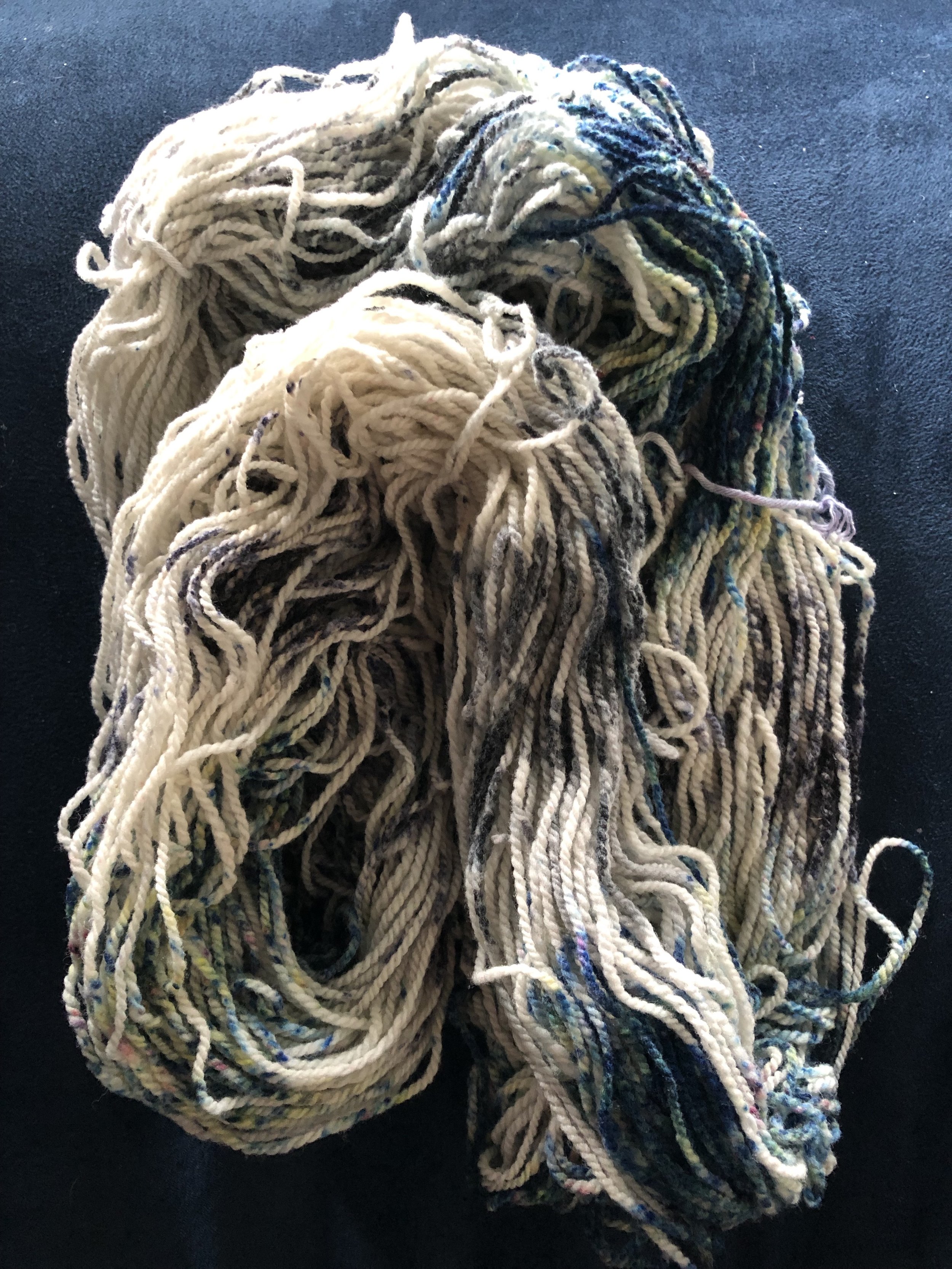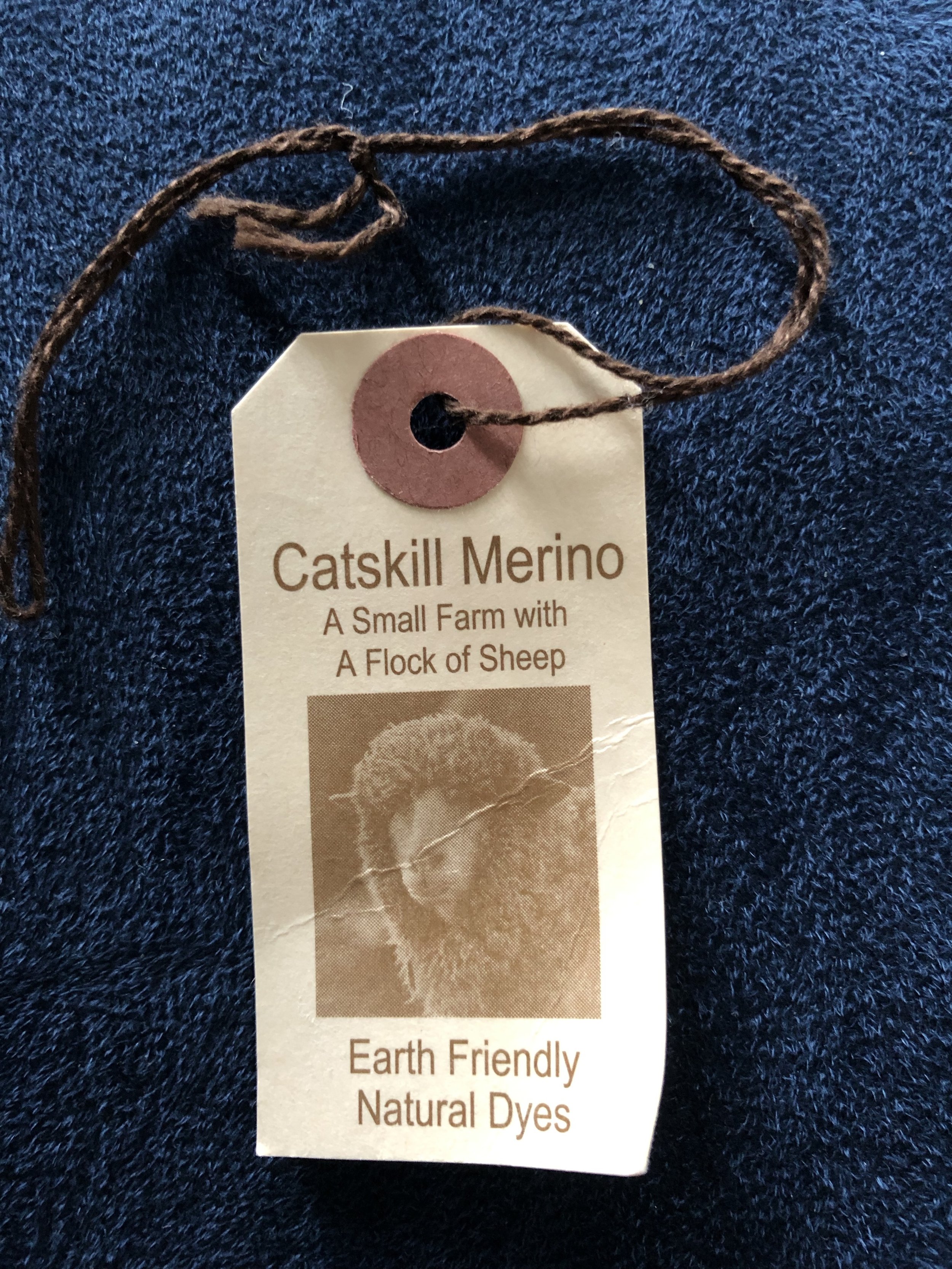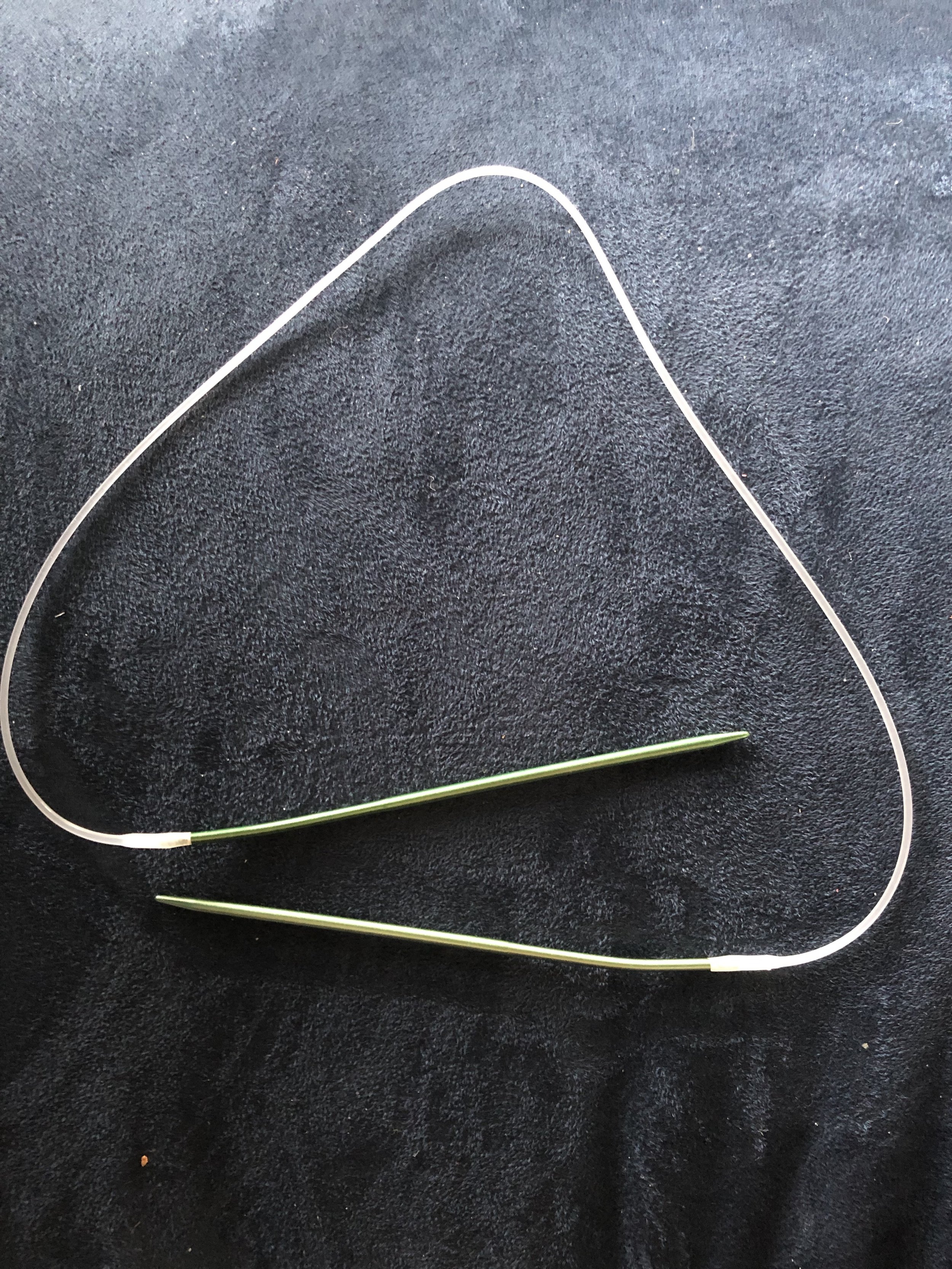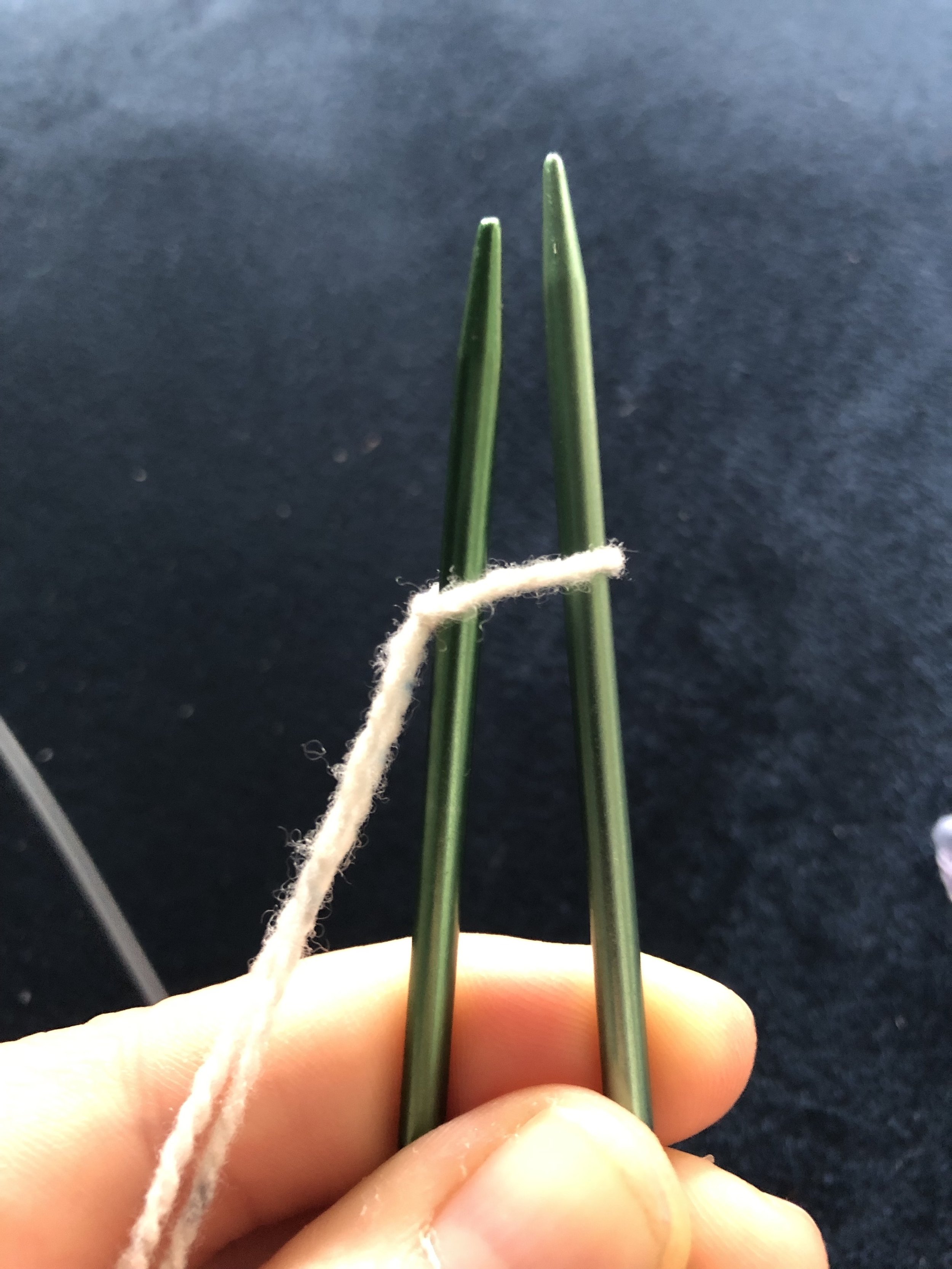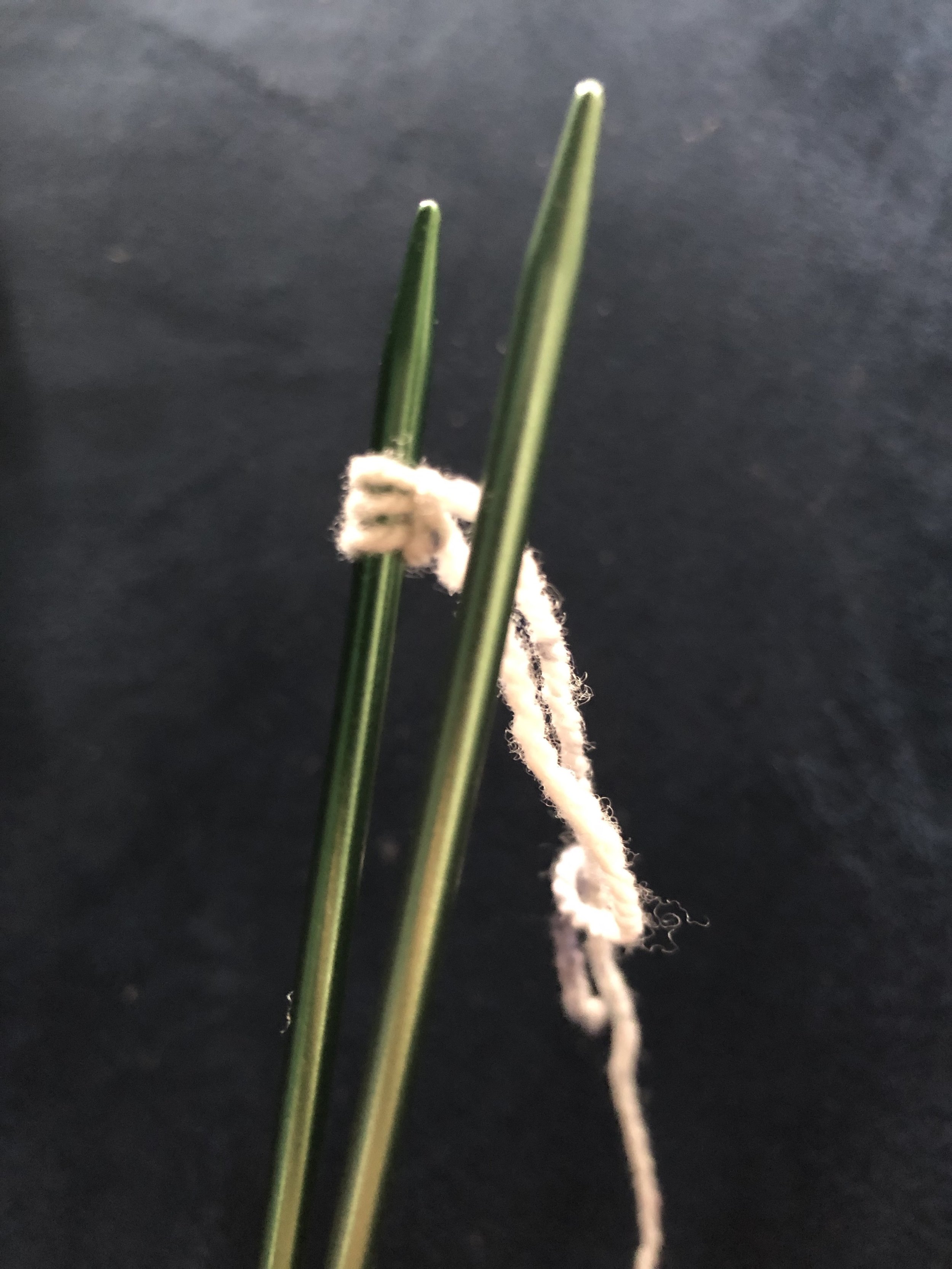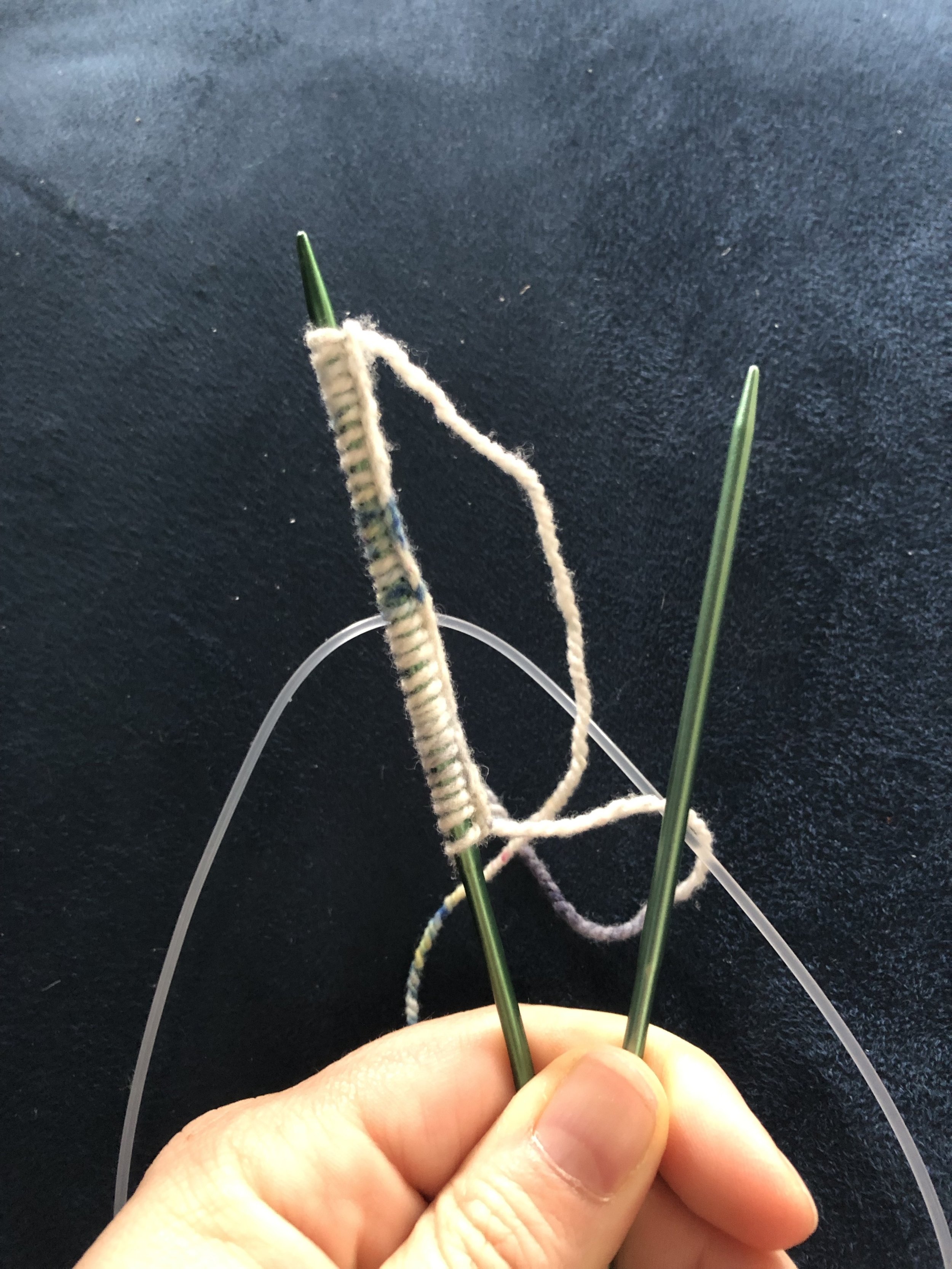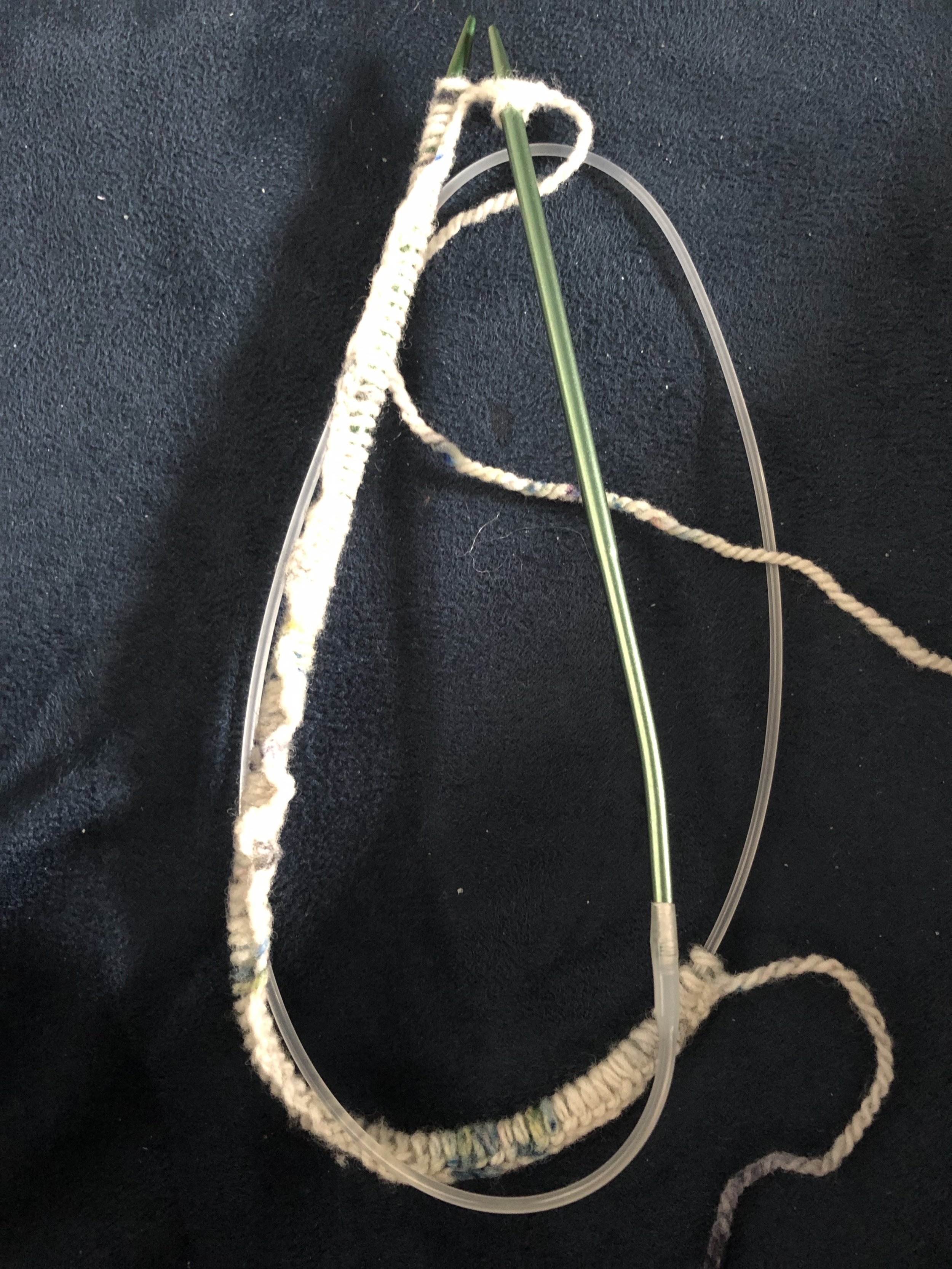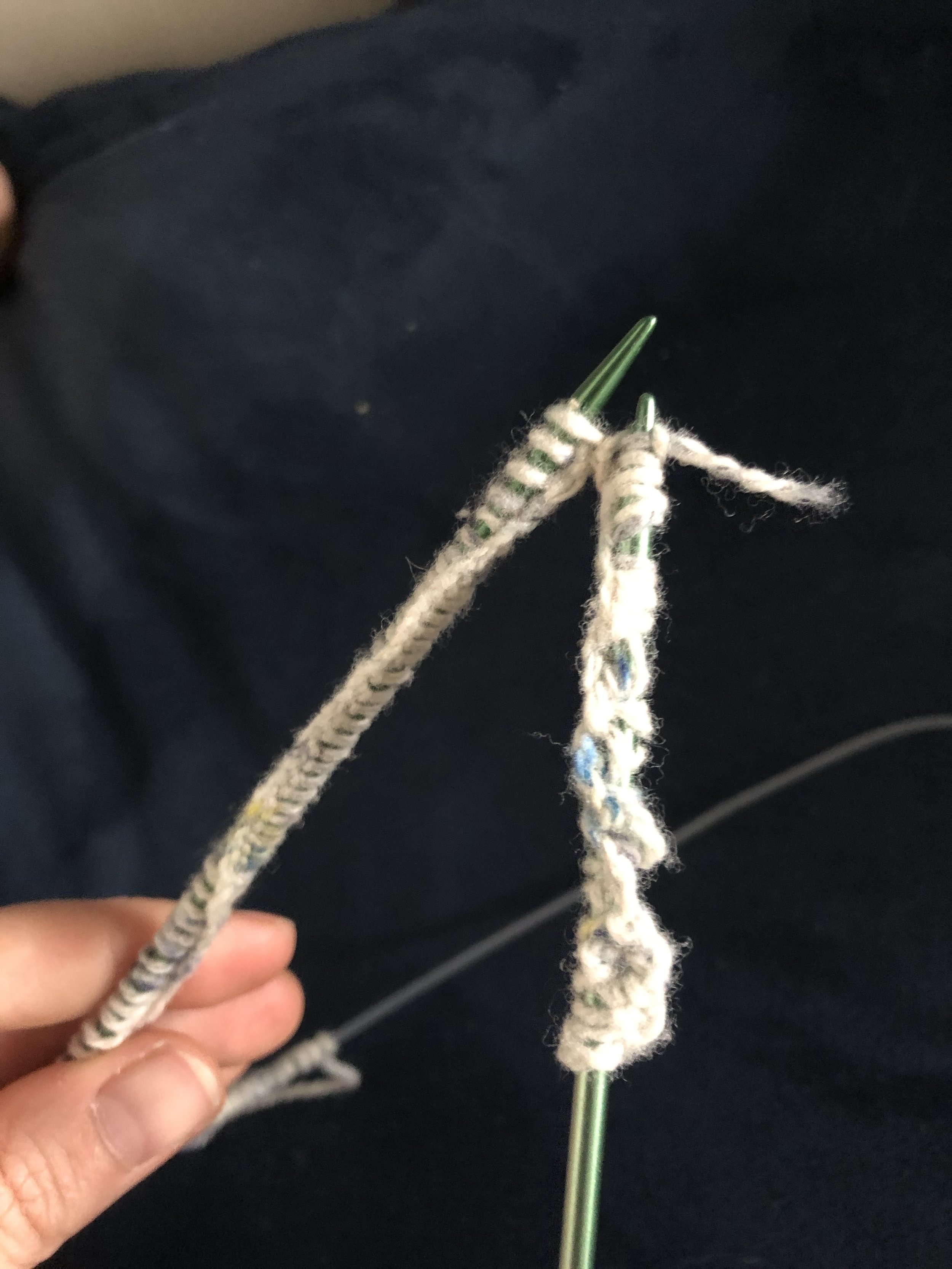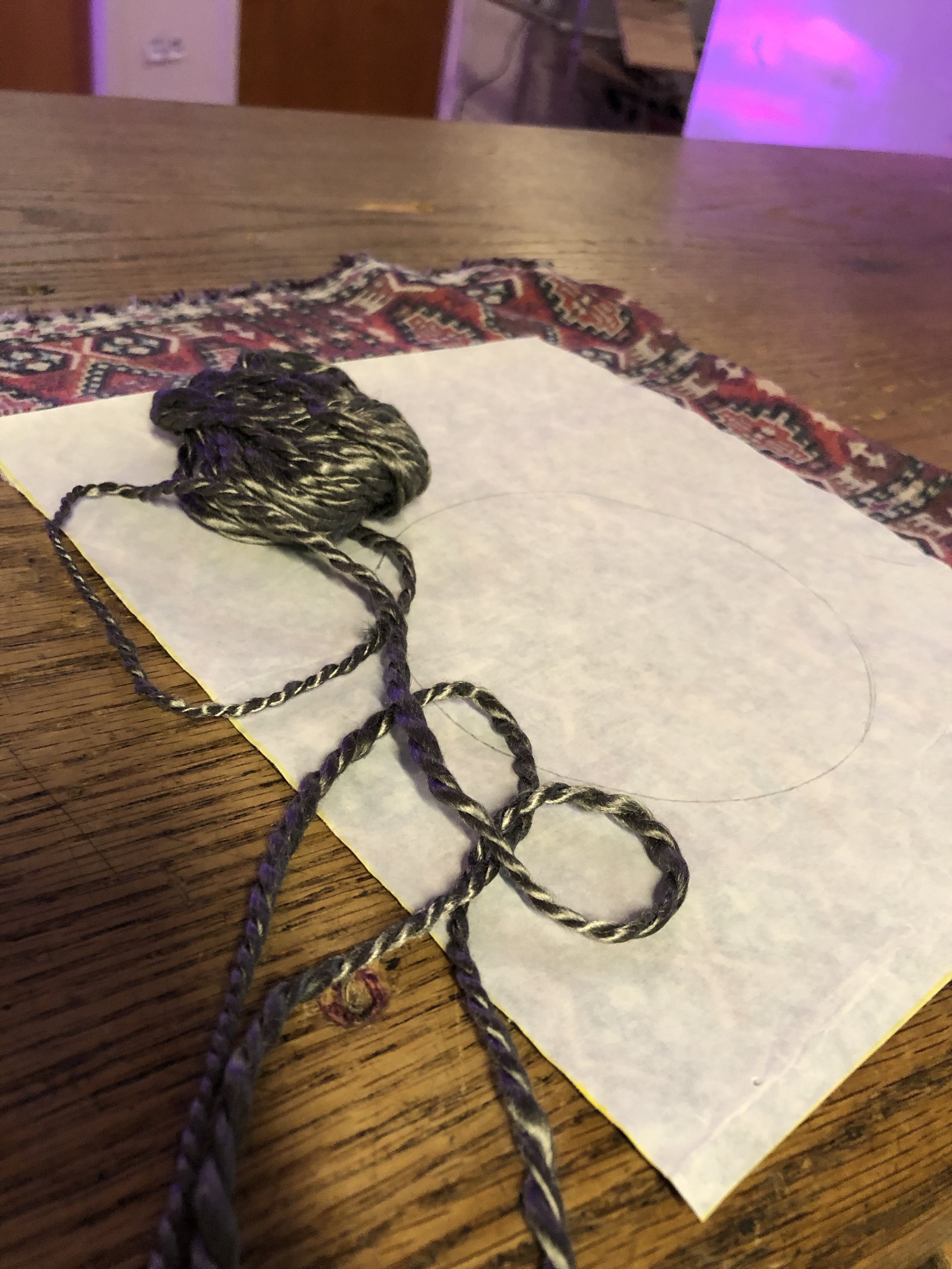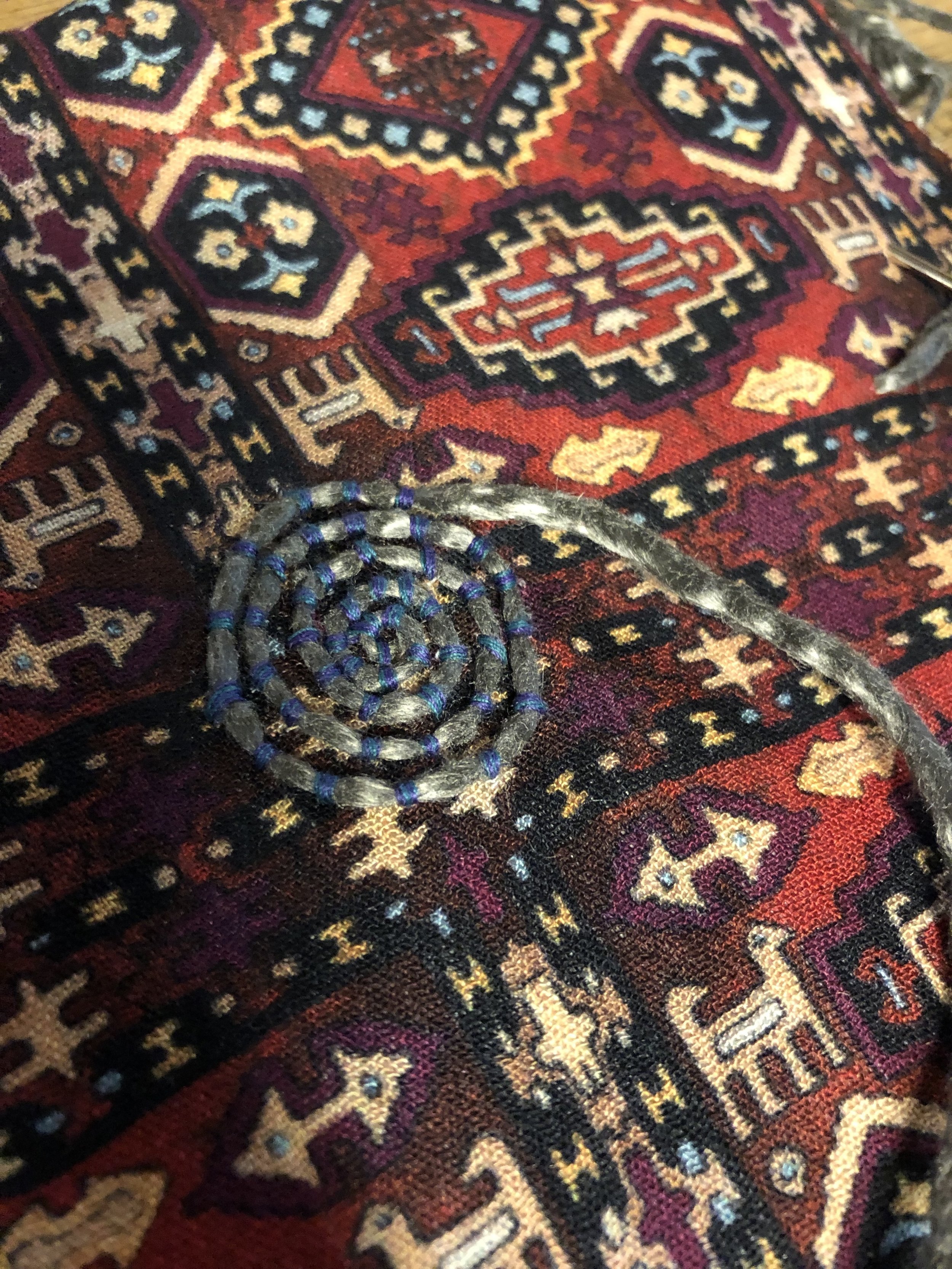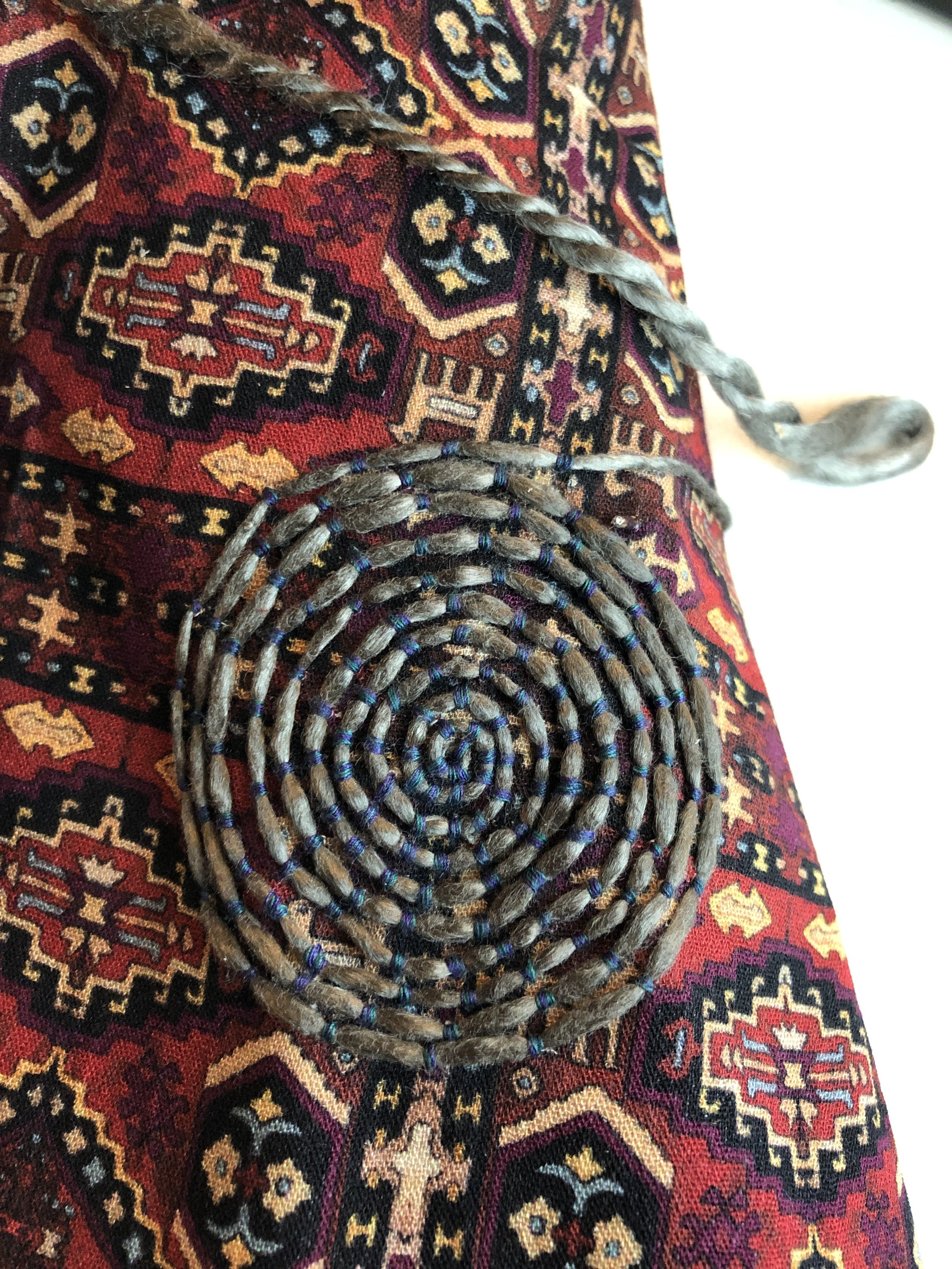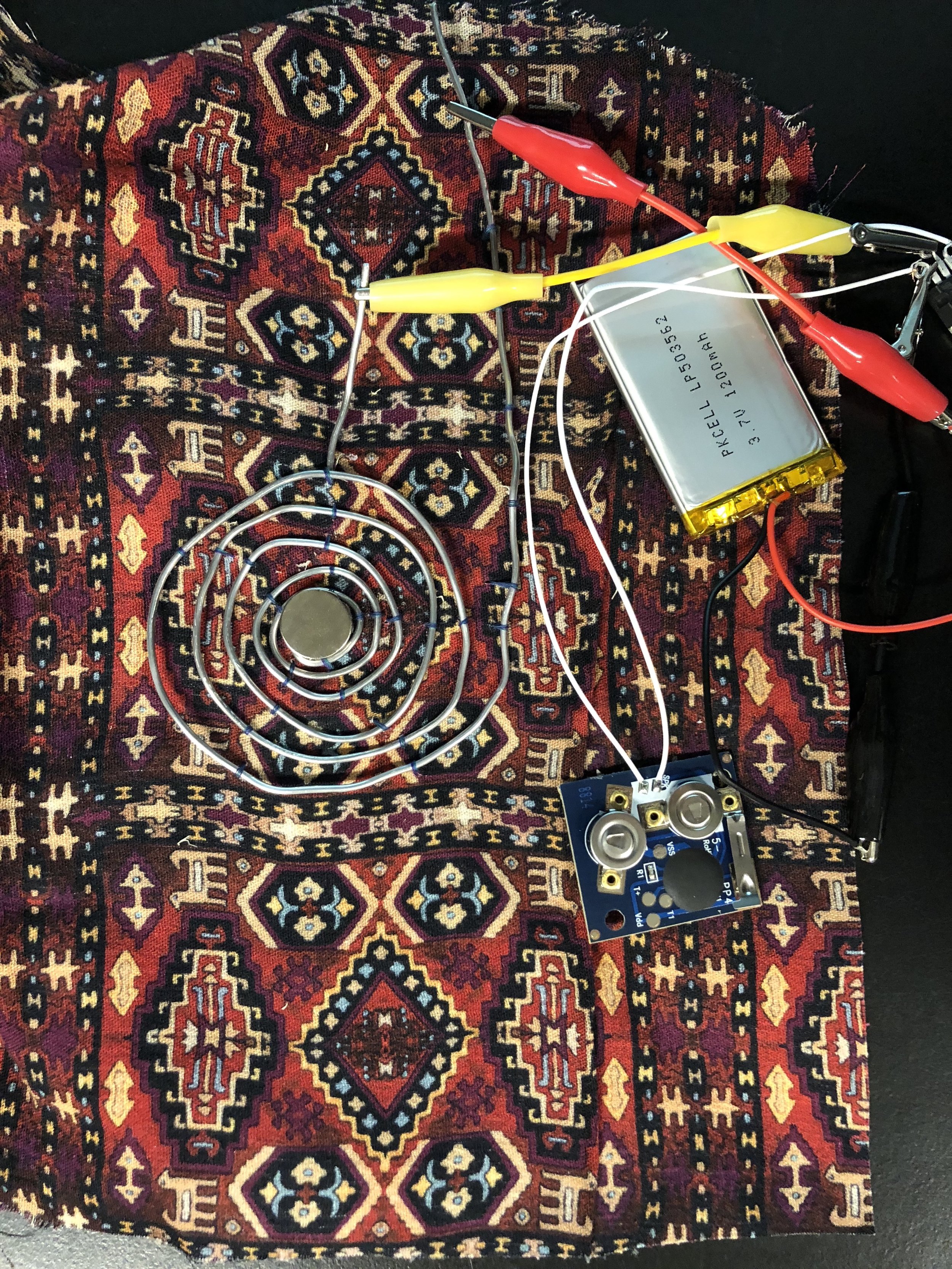I began my journey here with a goal to create a speaker in a beanie that would play music inside — two things happened that took me off this course.
I realized that knitting a hat is not a quick process — although not too complicated, 20 plus hours of knitting, yielded me about an inch out of the 10 I need for the hat.
The speaker is a bit more fragile than I anticipated, so wearability in this form is not the best idea
Nonetheless, here’s my deep dive into knitting followed my adventure into speaker creation.
I found a small sheep farm at the farmers market that made and sold their own yarn from the sheep that have have on their farm. I bought some yarn and some needles unknowingly to what I actually needed and began to follow a tutorial I found on youtube and started my process. Quickly, I noticed that the yarn was incredibly thin compared to that of the tutorial, but I pushed through, did some quick math, and started to go.
Five hours later, I was somewhere short of maybe 3 lines — so another 10 hours later, we had 10 lines. Not too much in length due to the thickness of the yarn unfortunately.
From here, I pivoted to figuring out the speaker components. I found a video on youtube on splicing a headphone jack of a pair of headphones and decided that I would figure out the same with the embroidered speaker. Later, I found that this blog had a better tutorial, but I did not have the correct parts, so I ended up taking the ‘simple’ route and buying a greeting card and hacking the components, similar to the example on the initial tutorial I had found on instructables.
I started out with a piece of fabric from the shop and some heat n’ bond to give the material more structure for the speaker. I purchased stainless steel conductive thread through etsy and used this as the conductive agent. Magnets were purchased on Amazon and I used thread from the shop as well. I began by following the tutorials and embroidered a speaker and disassembled and hacked the greeting card to act as the audio component. The card I chose had a few LED’s as well, which signified that the switch had been pressed.
As of Monday morning, the speaker looks great, but not sure why it’s not working. Will update with more info.
[UPDATE - Tuesday evening, 5/13]
I ended up purchasing another card and hacking the audio via the tutorial, and it still didn’t work. I then had an assumption it may be the coil, so I made another coil out of a different material (wire) that was was more conductive and had less resistance — AND it worked!
So lessons learned were that the material and resistance really mattered in this experience. But found this a great exercise.
x.


